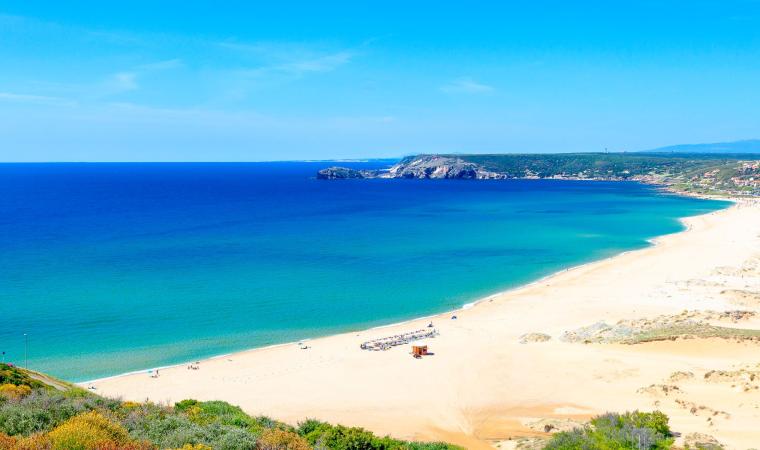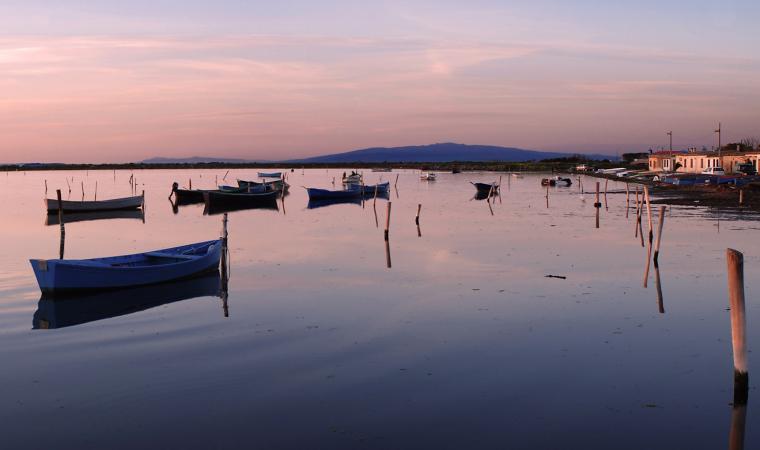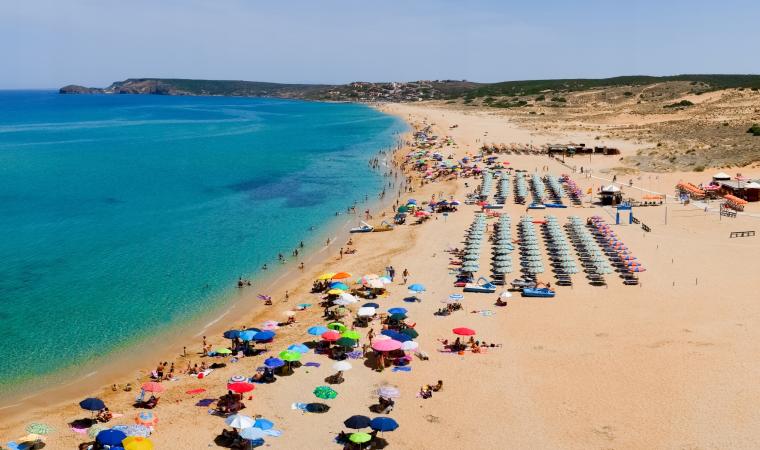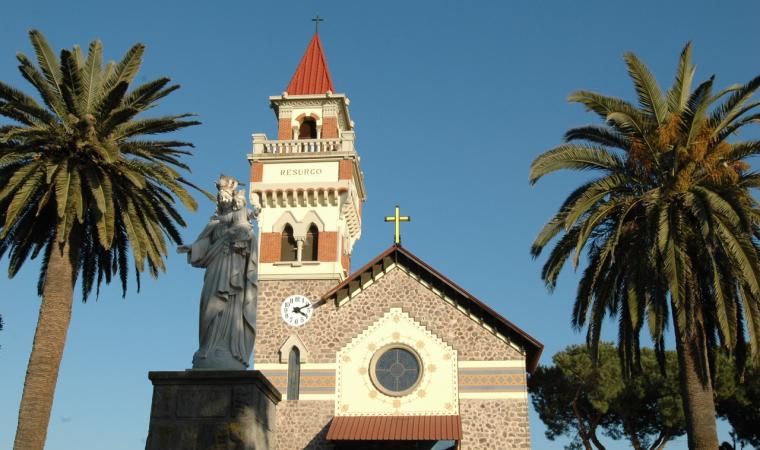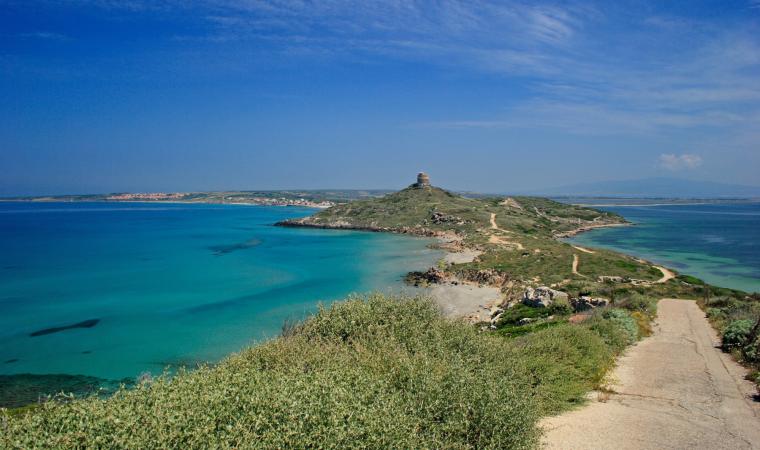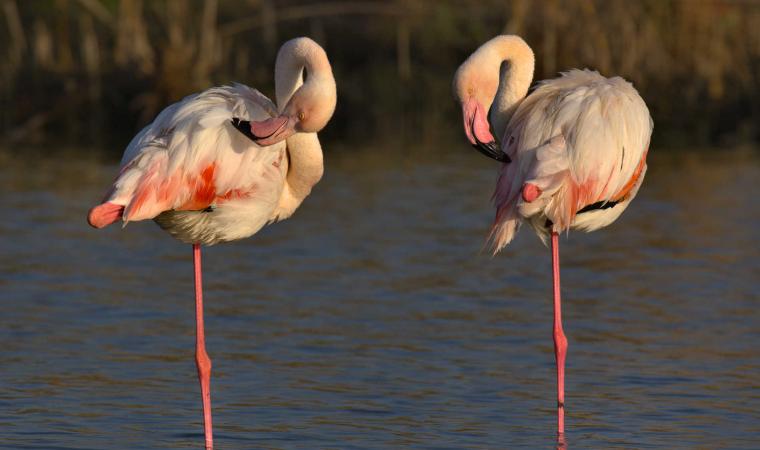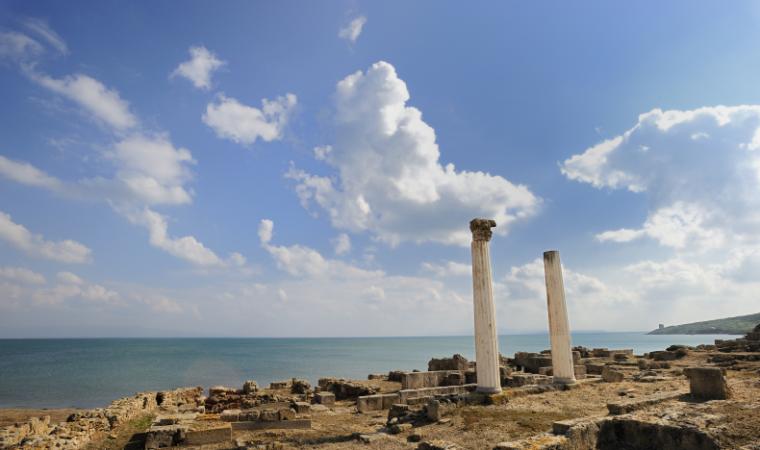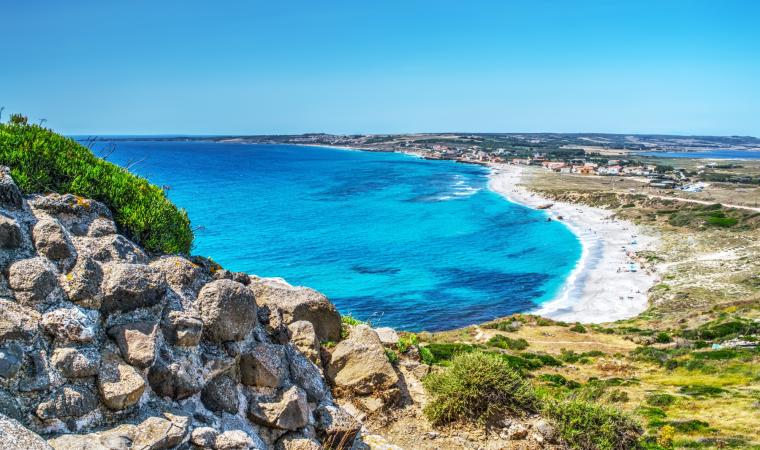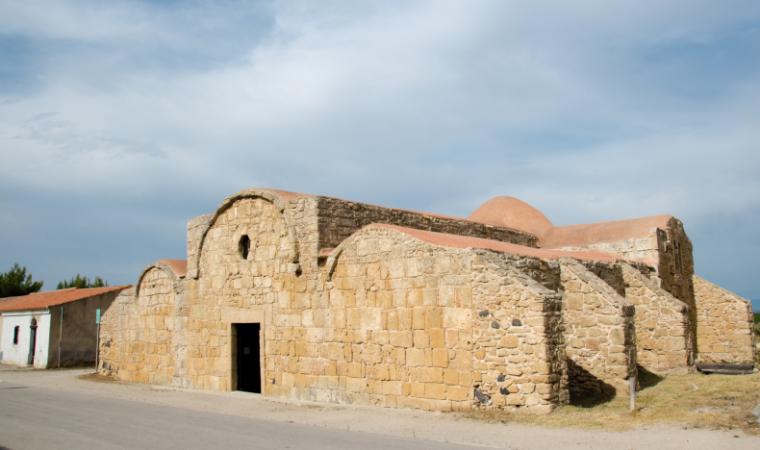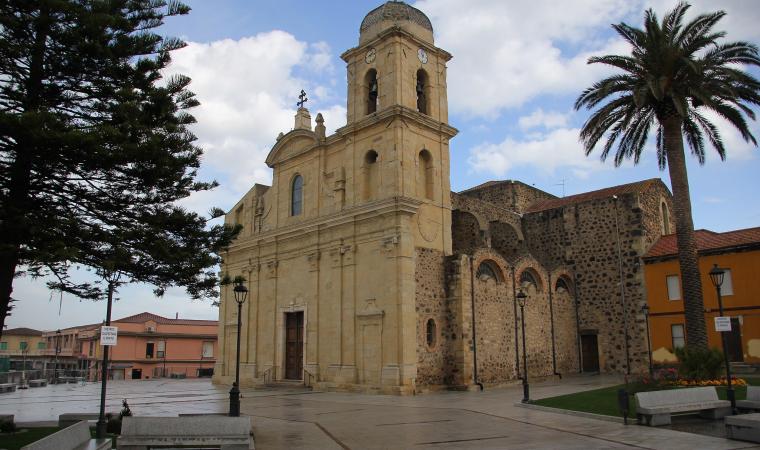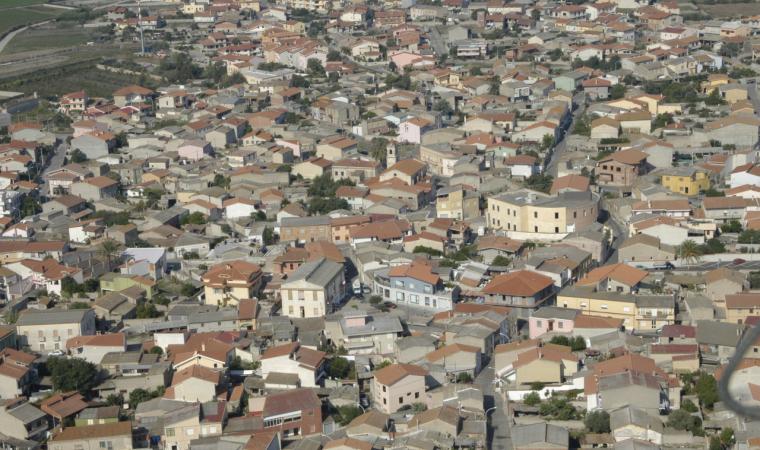At the northern border of the Costa Verde, in the territory of Arbus, the very long beaches of fine golden sand make way for hidden coves, shaped by the wind and the sea, with breathtaking depths. Here, where the rocks merge with strips of sand creating natural pools, you’ll find the shining s’Enna ‘e s’Arca, a delightful rocky cove on the border of the military polygon of Capo Frasca to the north, while the sandy stretches begin to the south, starting from the splendid is Arenas s’Acqua ‘e s’Ollastu (the sands of the water and of the wild olive), commonly known as the Sabbie d’Oro (Golden Sands) of Pistis. At the bay, the basalt aiguille of punta s’Achivioni stands in the background and is evidence of volcanic activity millions of years ago. For about 60 years, s’Enna ‘e ‘s’Arca was closed to residents and visitors while today, in addition to the inlet, the so-called ‘Little beach of NATO’, a small stretch of sand that breaks the continuity of the cliff, is also accessible, along with a small port inside the military base.
The rocky, jagged coast is characterised by basalt and sandstone rocks modelled by the waves of the sea, salt and winds into fanciful and picturesque shapes. The waters are crystal clear, reflecting shades of emerald green, deep blue and cobalt blue. The depths of the sea, made even more beautiful by alternating rocks, are the habitat of numerous fish and a paradise for snorkelling and underwater fishing: you can easily come across enormous amberjacks, seabreams, gilthead breams, sea bass, snappers, weevers, the ornate wrasse and many others. An infinite number of delicious sea urchins populate the rocks. Out of the water, there is a lunar landscape, while the dark reddish and brown colours give the cove an unusual charm. The fragrant Mediterranean scrub dominates all around.
Local sandstone and basalt were once used as construction materials and they are now of interest to geologists and visitors. Sandstone, in particular, has been a resource since ancient times, as is evident in a Punic-Roman quarry that you will see at the entrance to Pistis, a tourist village built in the 1980s. The mining activities have made the landscape even more unique, with even incisions made by man, alternating with uneven ones made by nature. The area has been of strategic interest from prehistoric times to the contemporary period: nuraghi and watchtowers are located there. With the sandstone from the quarry, the Spanish built the Flumentorgiu tower, at the end of the 16th century, which stands out at Torre dei Corsari. Then there is a Navy lighthouse dominating Capo Frasca.
With the plain of Sant’Antonio di Santadi and the promontory of Capo Frasca, s’Ena e s’Arca form a peninsula that closes the Gulf of Oristano to the south and marks the beginning of the Costa Verde. The first beach is the Sabbie d’Oro (Golden Sands) of Pistis: almost two kilometres of imposing dunes of fine sand, ‘moved’ by the northwesterly wind, which slope down into the crystal clear sea on one side, while they enter the hinterland on the other side until they are covered by the Mediterranean scrub: rockroses, strawberry trees, wild olive trees and twisted junipers, one of which became the home of the poet Tziu Efisiu Sanna. The dunes stretch as far as Torre dei Corsari, where the expanse of sand is another magnificent ‘little Sahara’. The spectacular and wild landscape of the Arbus coast also carries on into Funtanazza, Portu Maga and Marina di Arbus, and in the two undisputed ‘pearls’ of the Costa Verde, the ‘desert’ of Piscinas and the ‘talking’ beach of Scivu.



























